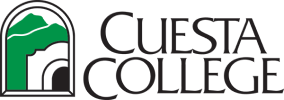
Program Summary
ECONOMICS - Associate in Arts for Transfer
The Associate in Arts in Economics for Transfer degree (AA-T in Economics) at Cuesta College provides students with the theoretical and empirical foundation to comprehend and critically evaluate economic events, issues and participants impacting the U.S. economy.
The study of economic theory and application allows students to develop their own perspective on causes and solutions to some of the pressing economic topics of society. The Economics Program at Cuesta College will provide students with a principle foundation from which to understand and improve decision-making processes in many aspects of life: as a consumer, an employee, an employer, a voter, a member of the global economy, and other roles. The General Education requirements of the degree will allow students to develop an understanding of the larger world and to cultivate personal qualities such as ethics, civility, cooperation, curiosity and open-mindedness.
Students graduating with the AA-T in Economics will be prepared to transfer to a CSU as well as other universities in Economics or similar majors. Economics graduates at the Bachelor’s level are qualified for positions in industry, government, and public interest organizations. Additionally, they are well prepared to enter a graduate program in economics, business, journalism, law or public policy.
The Associate Degree for Transfer (AA-T or AS-T) is a special degree offered at California Community Colleges. Students who earn an AA-T or AS-T degree are guaranteed admission to a campus within the California State University (CSU) system in a similar major, although not necessarily to a specific campus. Students who complete an AA-T or AS-T are given priority consideration when applying to a particular program that is similar to the student’s community college major and will be given a special GPA advantage when applying to CSU impacted campuses or majors. Students who are planning to pursue an AA-T or AS-T are strongly advised to meet with a counselor for additional information about this transfer program.
The Cuesta College AA-T degree in Economics requires:
(1) Completion of 60 semester units or 90 quarter units that are eligible for transfer to the California State University, including both of the following:
(A) California General Education Transfer Curriculum (Cal-GETC).
(B) A minimum of 18 semester units or 27 quarter units in a major or area of emphasis, as determined by the community college district.
(2) Obtainment of a minimum grade point average of 2.0.
(3) Earn a “C” or better grade in all courses required for the major or area of emphasis. A "P" (Pass) grade is an acceptable grade for courses in the major.